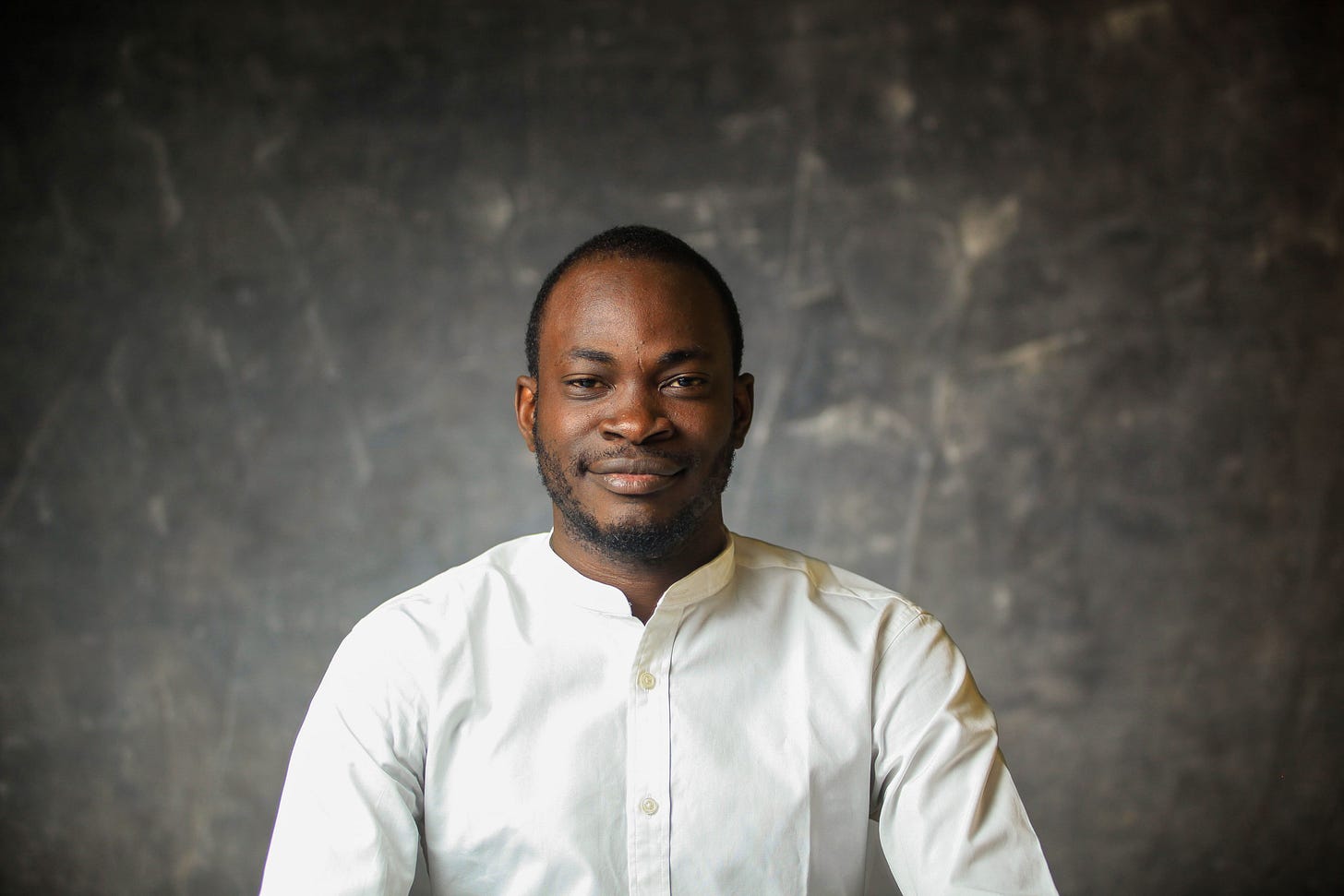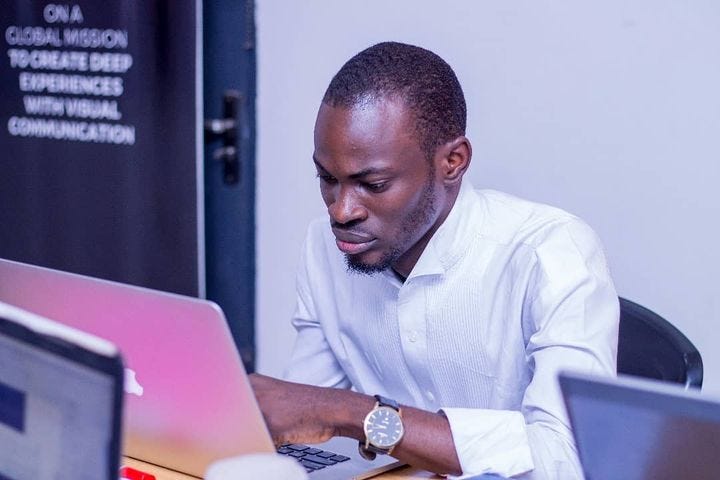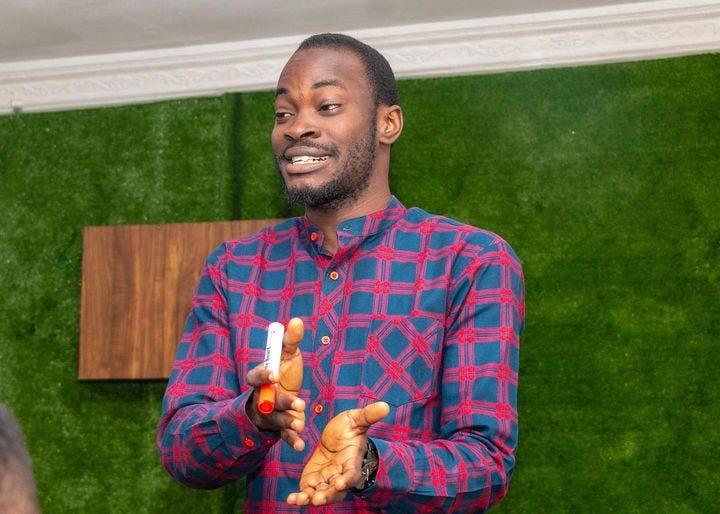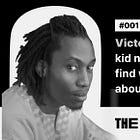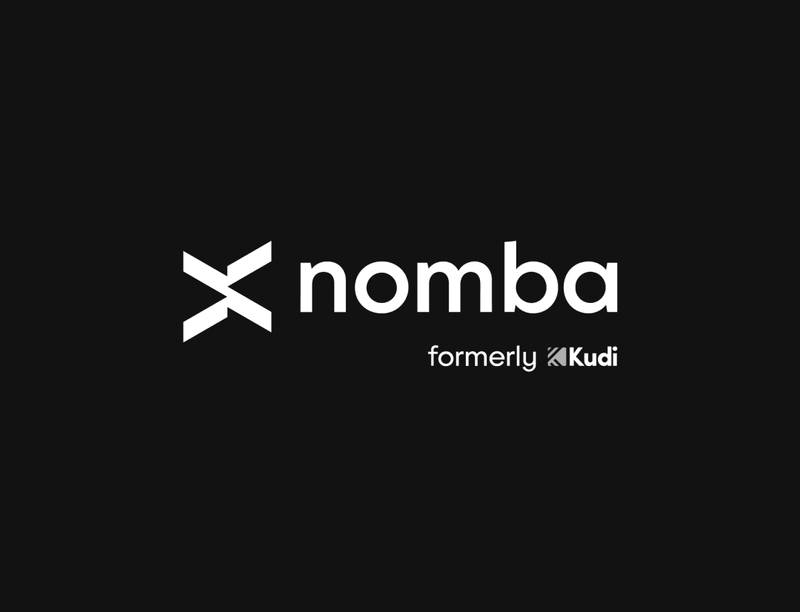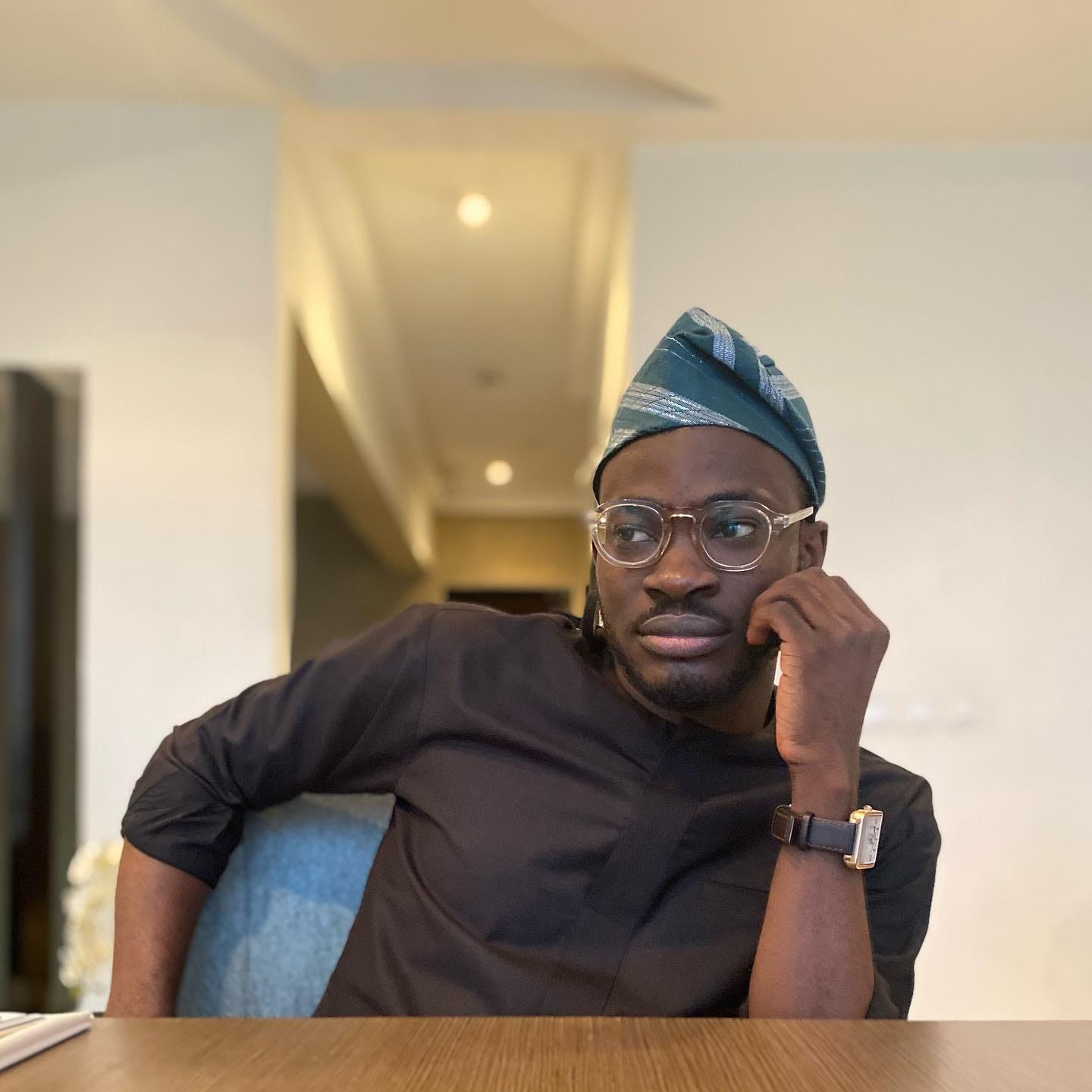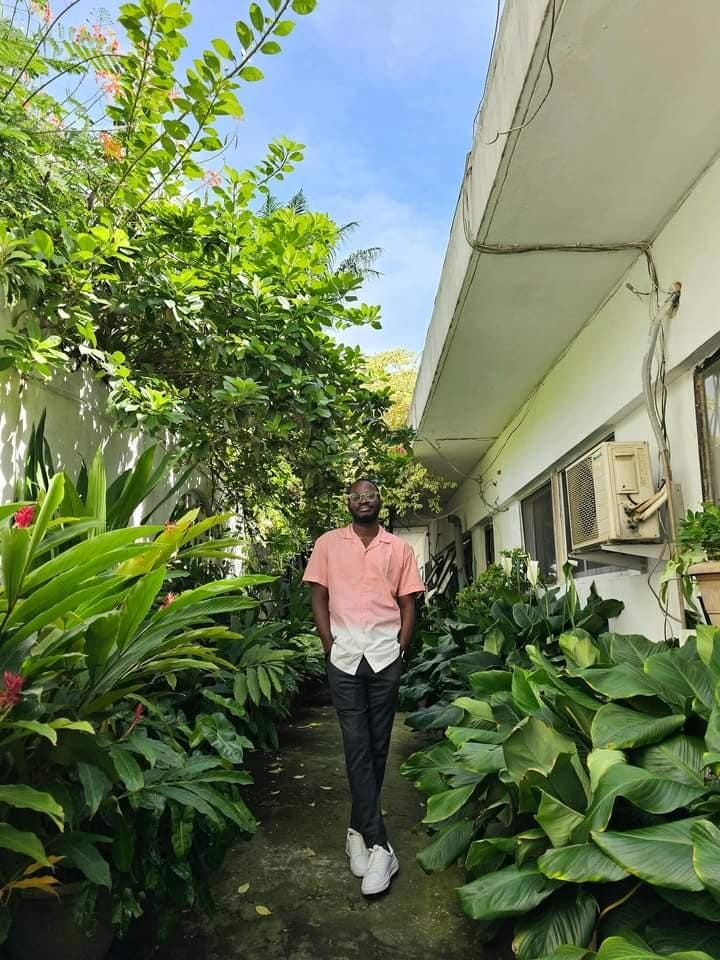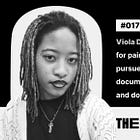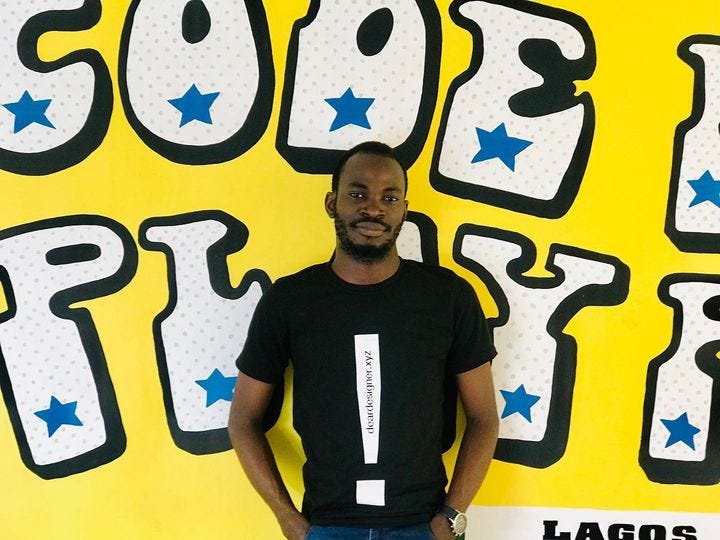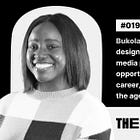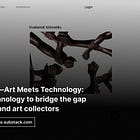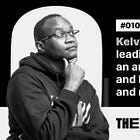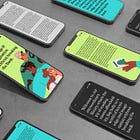Tunji Ogunoye: On finding design, leaving physiotherapy for design, paying attention to details, and the impact of teaching design and building a community on his career — #021
"The reason why I can do a lot of things effortlessly now is because of the things I have done in the past. I have invested time and effort in the past."
Happy New Year! And welcome to 2024. Firstly, I would like to say a very big thank you to all existing subscribers/readers for reading and sharing our stories all through 2023.
The Creatives Note is officially back for the year and we’re ready to serve you amazing stories of African creatives and many more exciting stories, reports, and content on creativity in Africa.
In 2024, we will be bringing you more news, opportunities, creative resources, insights, opinions, and conversations around creativity (in art, design, and film) across Africa.
If you’re new here, subscribe now to get these stories and updates straight into your inbox.
Hi, thank you for joining us for another edition of our interview with African Creatives. In this edition, I spoke with Tunji Ogunoye, a brand designer and design partner at FourthCanvas, a design agency based in Lagos.
Tunji, a trained physiotherapist, discovered design while on campus, and has gone on to design for some of the biggest startups in Nigeria and some global orgs—in the course of his decade-long design journey. Big on community and design education, Tunji is the founder of DearDesigner, a community for design and designers in Nigeria, and Africa.
In this interview, you will get to know what led him to design, how he got started, why he left physiotherapy for design, the challenges he faces as a designer and how he navigates them, his favourite projects, the people that inspire him, brands he would love to work with, and what drives him. You will definitely love and enjoy reading this!
Tell us about yourself
My name is Tunji Ogunoye. I am a brand designer.
I am a design partner at FourthCanvas, a strategy-led brand consultancy and design agency in Lagos. I contract for some global orgs as well.
I am also the founder of DearDesigner, a community for design and designers in Nigeria, and Africa.
Beyond design, I enjoy watching football and having football conversations. I am an Arsenal fan.
Interesting! How did you get started with design? What led you to design?
I got into design to feed my curiosity when I was at the University. I noticed that anytime I was on campus, I was drawn to the things I saw on signboards and noticeboards. So I decided to learn how to design. Also, I learnt design so I would be able to help my friends, my fellowship, and the people around me with their design needs. I didn’t know it was a big deal. To me, it was a nice-to-have skill.
During the ASUU strike in 2013, I went to the printing hub in Akure, Ondo state—where I was born, raised, and lived at the time—to learn CorelDraw (a popular design software). While I was learning, I would help them design things like flyers, event programmes, and all sorts. After 6 months of the strike, we resumed back to school and I continued designing—mostly helping my roommates, classmates, and church. Some paid and some didn’t pay.
With time, I started getting gigs to design for events on campus and I became really popular because my signature—Sigma Brands—was on a lot of posters, banners, jotters, and journals at the time. I became a big name on campus and even got on a ‘Top 10 creative people’ list at the time.
Over time, I discovered the power that design has and how it solves a big problem for people. Design began to make sense to me and I started missing classes and clinicals to work on design projects. I gradually stopped focusing on school because my attention had shifted to design. By the time I got to my final year, I was focused on design—I must have forgotten I was a student. I barely attended classes—I only read for exams to pass.
For context, I was in medical school; I studied physiotherapy. I initially applied to study medicine but didn’t get in so I was ‘given’ physiotherapy. Studying medicine or physiotherapy was not my decision, I did it because my Dad persuaded me. According to him, medical professionals could easily get jobs, so I should study something in that line.
Back to my story: After I wrote my final paper in March 2016, I didn’t go home. I stayed back and continued to design. I also held design training for students—through Campace, a design community we started at the time.
While I was designing actively during this period, I still didn’t think I was going to do design full-time. I saw it as a good side hustle outside of physiotherapy. I didn’t even think I could make more money in design than I would in a ‘professional’ career.
During the time I was waiting to go for my physiotherapy internship (a compulsory one-year program in a hospital), my friend, Tunde Ogunkunle (Ferricool), who had just finished his Bachelor’s in Architecture at the time, got a job in Ellae Creative, a design agency in Lagos. (I would like to mention that Ferricool has had one of the greatest influences on my design career). He went to Lagos and spent one month on the job before coming back to Ife. When he got back, he shared his experience with me. He spoke really well about working in an agency and it made me interested in working as a designer. When he was about to leave the job, they asked him to recommend someone and he recommended me but I didn’t take up the offer because I wasn’t ready to move to Lagos.
Read Also: Victor Fá: The artistic kid now helping people find what is special about them
In July, I went back home—waiting to get a call to resume for my internship. On a fateful Saturday, Ferricool called me to tell me that Victor from FourthCanvas called him that they needed a designer in Akure to join them. They initially wanted him to join but he wouldn’t be able to join them because he had already started his Master’s program. But he had recommended me to Victor instead. That same day (July 16, 2016), Victor called me, we met and the rest as they say is history.
Funny story: I was supposed to meet with Victor the year before (December 31, 2015). But when I got to his office in Akure, it was locked. I called him, but he didn’t pick up. I messaged him, but he didn’t reply too. He had forgotten we were supposed to meet and had travelled home for the New Year celebration.
When did you decide to go full-time into design?
I decided to do design full-time after joining FourthCanvas. The internship I was waiting for didn’t happen until the next year (May 2017). By the time it happened, I had worked at FourthCanvas for 10 months.
I joined FourthCanvas as a design associate in July 2016 and by January 2017, I was already leading other designers on the team. At that point, I had seen the kind of clients we were working with and had seen the potential in pursuing a career in design.
The project I was brought in for at FourthCanvas was the Nana Akufo Ado campaign. Before then, Fourthcanvas had worked on the Buhari campaign with StateCraft. So, I could see the potential in doing this full-time.
Additionally, I was making progress on a personal level. I had gone from being a design associate to leading a design team so it made sense to take it as a career and build my life around it.
Read Also: Is it a design problem or a customer’s problem?
Also, Instagram had become a thing at the time and I was seeing a lot of creatives doing amazing things. So when I eventually started my internship and did my service year, design was the major thing I did. Most times, I was usually done at the hospital by 1 pm. I would then spend the rest of the day designing.
How would you describe the journey and your experience so far?
It has been exciting to see a skill I picked up lead me to where I am today.
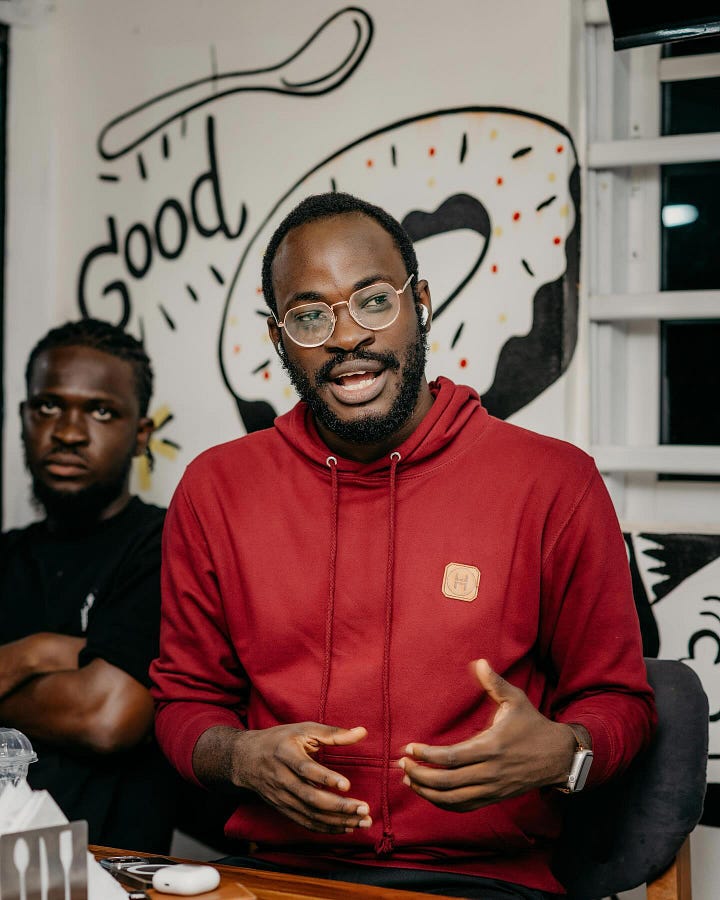
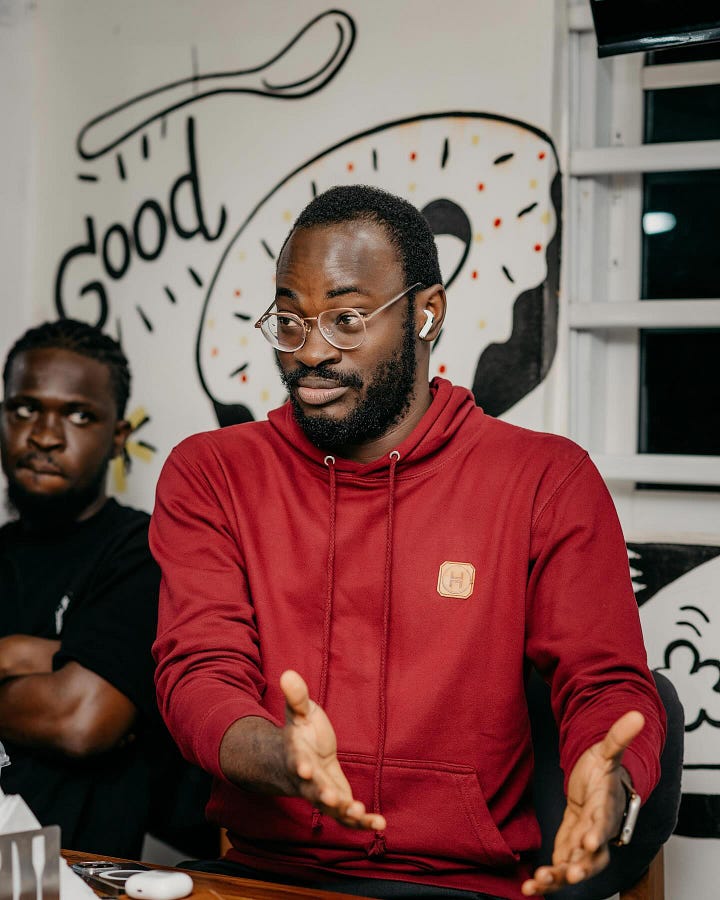
How would describe what you do to a five-year-old?
I help people and organisations speak better to people using graphics and images.
What is your day-to-day routine? What does a typical day look like for you?
My day is dependent on the work I have to do. But on a typical day, I would get on a call with the team or a client in the morning. After that, I get to work on whatever I need to work on; could be a presentation, designing for an ongoing project, or working on a brand guideline. By noon, I take a break to eat and check social media to catch up on what’s going on. But on days when there’s a lot to do, I may not eat until I finish what I need to do.
What do you enjoy most about what you do?
Picking a brand that is lifeless and almost obscure and giving life to it. Or working to help a business that has done a lot of business but hasn’t paid attention to their brand define who they are and express that in design.
Related Interview
What is the best career investment you have made as a creative?
Investing in paying attention to details. I believe my attention to detail is what makes me stand out and I got most of that in my early days at FourthCanvas. It was an investment because I was always working and getting work done. I learnt a lot in a short time.
The reason why I can do a lot of things effortlessly now is because of the things I have done in the past. I have invested time and effort in the past.
Another one will be investing in people—and community—by teaching design. I spent the first 5 years of my career designing and teaching. I would probably not have this level of influence I have now if I didn’t get into teaching design when I did.
There are a lot of people who I have taught who are now doing very well and that gives me a sense of fulfillment. My desire to teach led me to Campace.
Recently, I have started buying design books. I have a ‘relatively large’ design library. Reading these books exposes my mind to global standards and practice and also validates most of the things I have learnt and done throughout my career, so it feels good.
What are some of the challenges you face as a designer?
The number one challenge is design education. When collaborating with designers outside Nigeria, especially in the US and Europe, you will find out that at least 95% of them studied design or did a design-related course. But for Nigeria, the opposite is the case. To be fair to designers, it’s not just a design industry problem, I believe education itself in Nigeria is broken.
The problem with design education is that it affects how we see and approach design because most designers, like myself, are self-taught. We picked it up as a skill—learning here and there—and didn’t get to learn design the right way from the start. For professions like Law, Medicine, Accounting, and others with professional bodies that regulate them, it is easy to fish out quacks. But design is not like that.
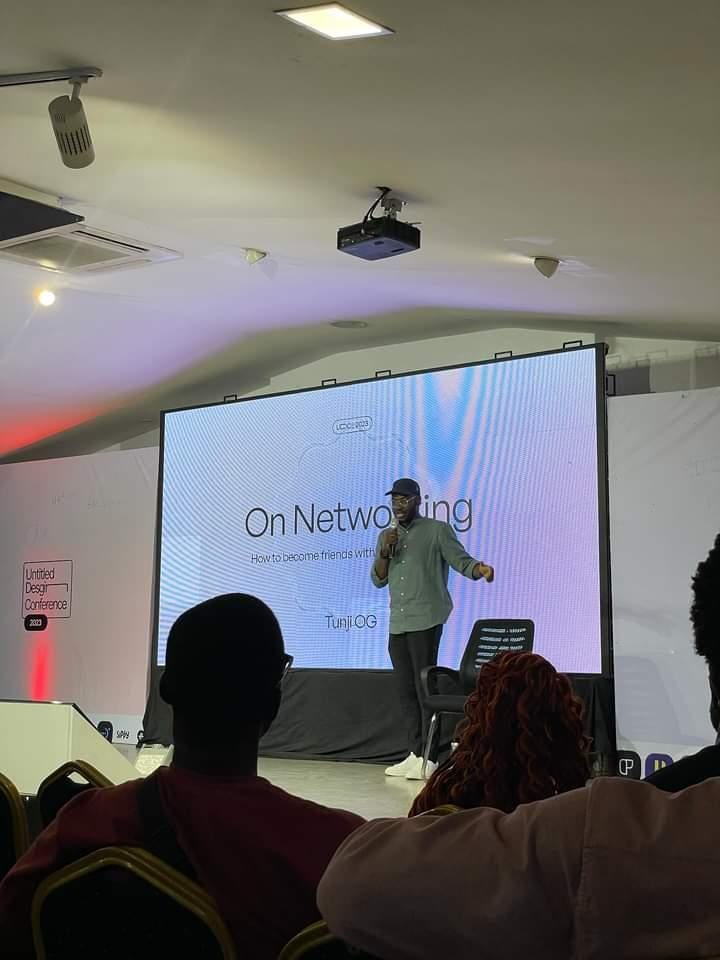
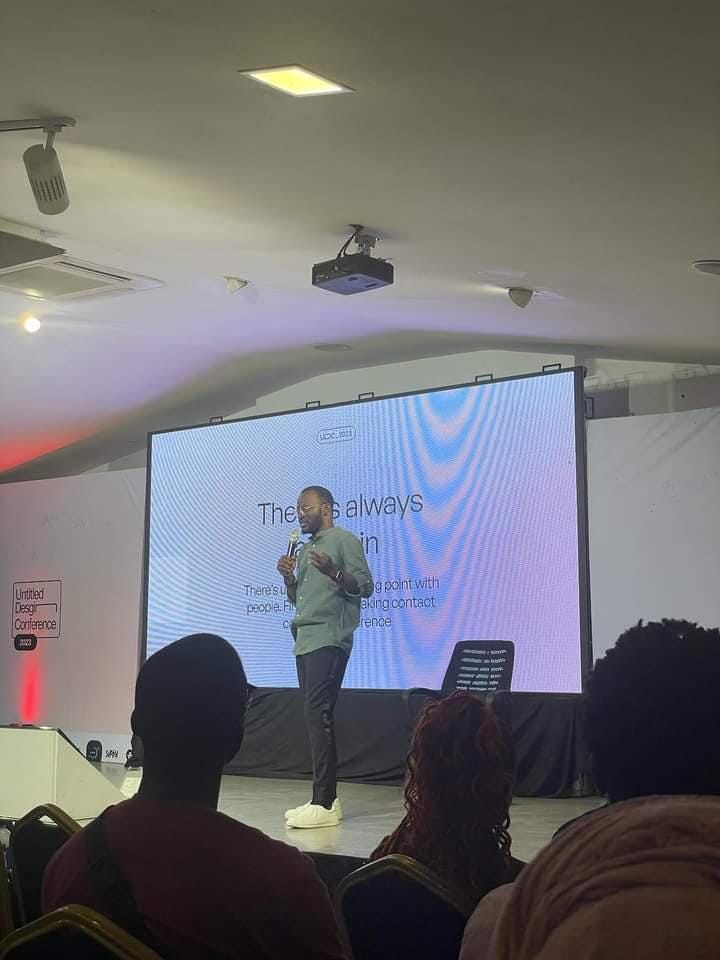
Another challenge is dealing with client expectations. A lot of clients come to you to help them build a brand like Apple and Google but they don’t understand the work that is needed to grow and sustain a brand like the global brands they want to be like. Most of them are not aware of the financial implications, time, and human capital investment of sustaining a brand. They don’t know the price and sacrifice these brands have had to pay over the years to have what they have now.
How do you navigate this challenge?
For design education, I have had to learn on my own and with people to fill the learning gaps. It’s why I am big on people and communities. They have helped me a lot.
As for client expectations, I have come to understand that a lot of startups in this part of the world have to deal with economic factors and some are still trying to figure out their product market fit so they may need to pivot months later. I have come to accept that branding is a luxury for most.


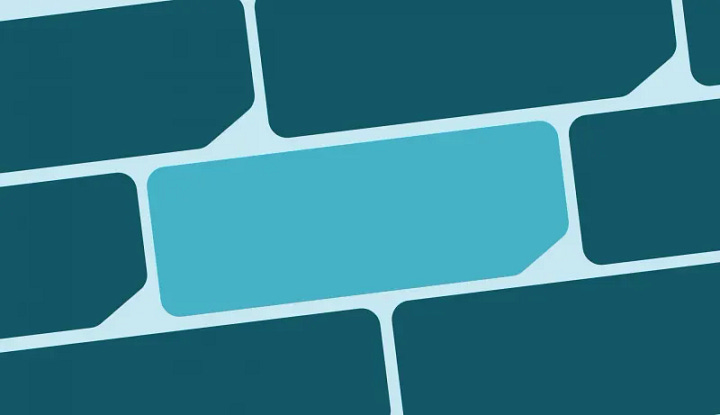
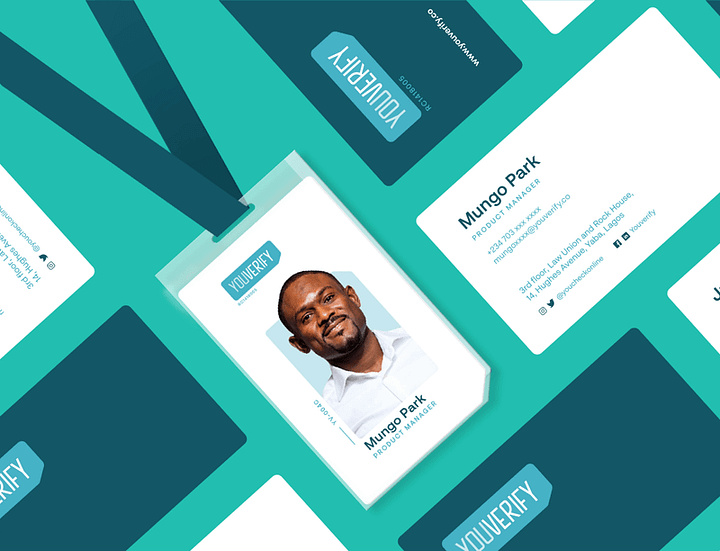
Tell us what your workflow and creative process is like.
A lot of the work I do now is brand design. Before now, I used to do a lot of editorial and publication work.
The first part of my process for brand design is to try to understand what the client wants. If there’s a brand strategy that has been done, I read it to get a deeper understanding of the brand. I also have conversations with the client—mostly listening to them.
Design involves a lot of convergence and divergence. There’s a lot of information that needs to be summarised. From there, I begin my research. I research the client, their industry, their competitors, and collaborators to understand their positioning.
After this, I start conceptualising based on the information I have gotten so far. At this point, there’s usually a concept note. This is where most of the work is for me. I create a concept note and come up with metaphors. (Metaphors are the things that describe the concept note.)
Once I have nailed this, I begin to explore ideas for each metaphor and share them with the client to get their thoughts. At the point of exploration, I am not just exploring the design of the logo, I am also exploring how it will work and look in different systems.
The client gets to approve the final idea which will then be fully developed. Until this point, there must have been a lot of back and forth, and sharing with the client.
After approval, I create systems, templates, and brand guidelines to be handed over to the client.
All the work done is based on the strategy developed at the beginning. Brand design is defined by strategy.

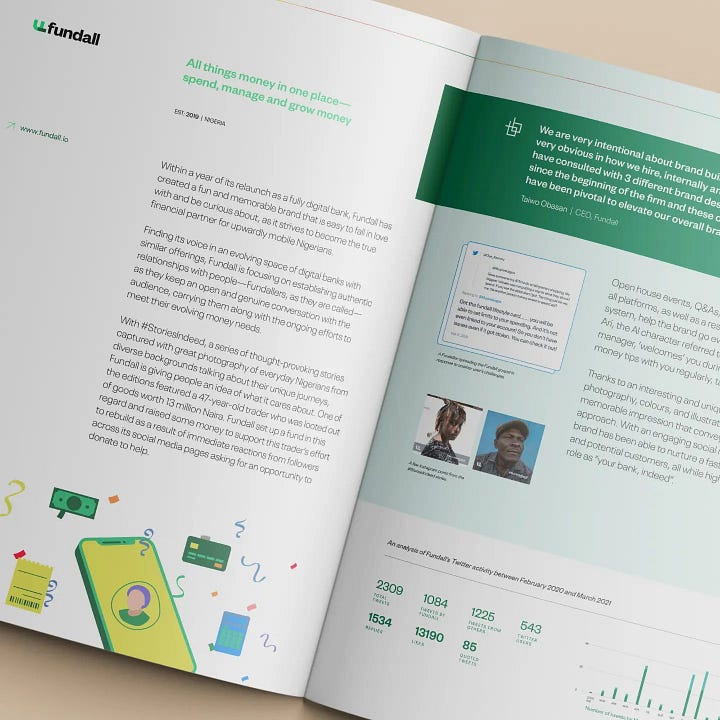
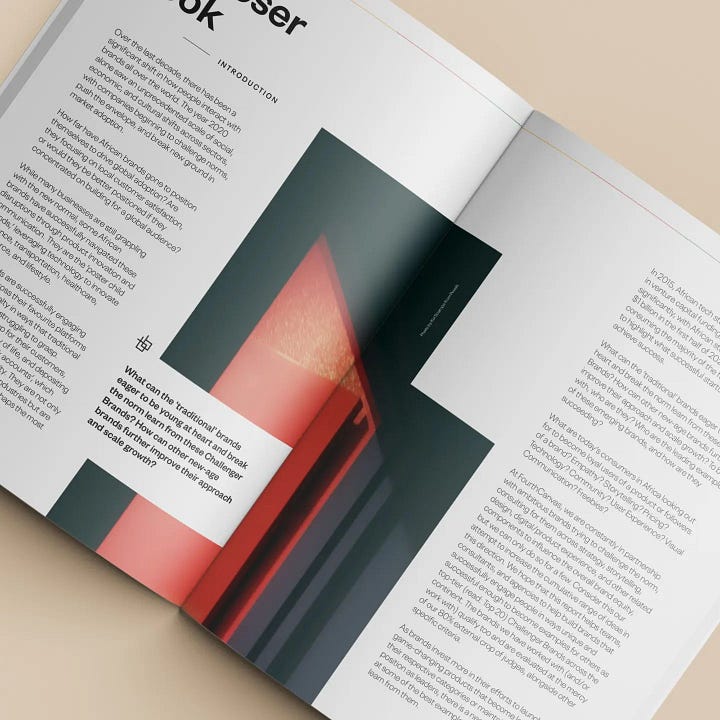
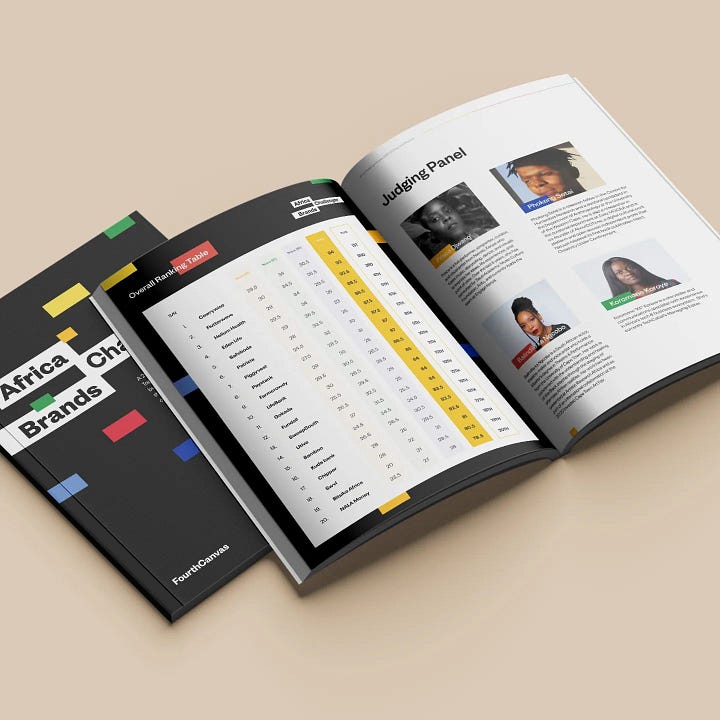
What part of this process do you enjoy the most?
There are two parts I enjoy the most: creating the concept note and executing the logo idea—finding the right typeface, and refining the details of the logo.
I pride myself on executing ideas and bringing them to life. I always say, “Give me your ideas, and let me handle the execution.” When I am given an idea, I am looking for ways to improve and make it better. And I love working on the final details.
I also enjoy creating brand guidelines. It is the summary of all the work that has been done. It is the manual of how everything that has been created should be used. While I enjoy putting it together, I should mention that it is the most exhausting part for me because I always underestimate the work that needs to be done and the amount of time it requires.
What are the essential gadgets, tools, and software you use for work daily?
I use a MacBook and monitor for work. I also make use of a notebook and tab for sketching.
For software, I mostly use Adobe Illustrator for designing, Indesign for guidelines, Figma and Keynote for presentations, and Google Docs for documentation.
How did the Covid-19 pandemic and lockdown impact you and the work you do as a creative?
The pandemic itself was quite terrible but the lockdown gave us proof that remote work was possible globally. The lockdown hastened the adoption of remote work because, while we couldn’t go anywhere, work had to be done.
The lockdown also allowed for creative adventures as people could work from anywhere, and work on multiple jobs at the same time.
How do you handle creative blocks and client pushbacks as a creative?
I see creative blocks as a call to rest and do something else away from design. So I talk to people. I talk to people and it helps. I like brainstorming with others.
For pushbacks, I see it as a part of the process. I believe we are working towards the same goal and the client is not doing it to frustrate me because, at the end of the day, they are the ones who will enjoy the reward for the work being done.
I acknowledge their pushback, ask why, and educate them when necessary. At the end of the day, we will arrive at a suitable solution.
What is the task you don't enjoy doing but you have to do?
I can’t think of any. I have learnt to do everything that needs to be done. It may not be convenient at first but once I start, I just keep going.



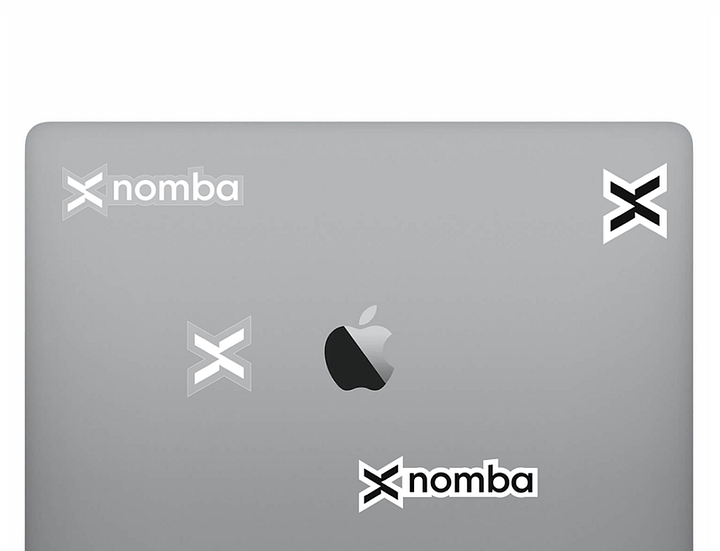
What are some of the most exciting projects you have worked on?
I love the Afriex project. I love the challenge it brought.
Another one is the Africa Challenger Brand (ACB) project. I designed the full report 24 hours before the launch. I did a marathon on it and it came out good.
The Youverify project is another project I love. I just love the entire conceptualisation and execution of the project. It was the first time I created a typeface.
There’s also the Nomba project, my most ‘popular’ project in Nigeria. It was a challenging one but we pulled it off.
How do you stay creative and motivated to keep creating?
Design is my career. It is what brings me money and how I make an impact and experience fulfillment. I chose to do it because ordinarily, it wasn’t on the radar of things I thought of doing when I was younger. For me, it is a life I chose for myself.
People also keep me going. I talk to people a lot. It is hard for me to work on a project in isolation. I love talking to people. I enjoy analysing and thinking things out loud with people—I talk through problems.
How do you relax and have fun?
I enjoy reading about and watching football. I listen to music too.
I also like to visit my friends—to gist and talk about everything.
Who are the creatives that inspire you?
Mostly my friends; Mary Afolabi, Tunde Ogunkunle, Victor Fatanmi, Samuel Obadina, Ageh Abiodun, Praise Philemon, and Seyi Olusanya, to name a few.
What brand would you love to work with?
Uber and Apple (Though I worked on an Apple account in 2020, I would still love to work on another project for them).
What would you be doing if you were not a designer?
Something in engineering; mechanical, electrical, or chemical.
What advice do you have for someone who is at the early stage of their creative journey?
Design has the potential to change your life. Give it time and attention to learn. Give it your all.
Read Also
What would you consider success and fulfilment in your career when you look back in the next 20 years?
One will be that there’s a brand whose story can’t be told without mentioning my name. And the second will be that I have made a lot of money in design—and design has played a big part in whatever I am doing then.
Whose story would you love to read about?
Seyi Olusanya, Yadichinma, Oyinkan Karunwi and Coker Oluwafemi.
Do you have anything you would like to plug in or promote?
Check out DearDesigner. We have published insightful articles and conversations with designers you will enjoy.
Thank you for sharing with us!!!
Connect with Tunji on Twitter, Instagram, and LinkedIn.
Thank you for reading and don’t forget to like and share the interview.
See you next time!!!
Follow us on Twitter, Instagram, and LinkedIn to stay up to date.




